As of 2024, Google Shopping Ads have become the most powerful tool for retailers, accounting for 76.4% of all retail search spending in the US. Let’s understand exactly what these ads are and how they can help your business grow.
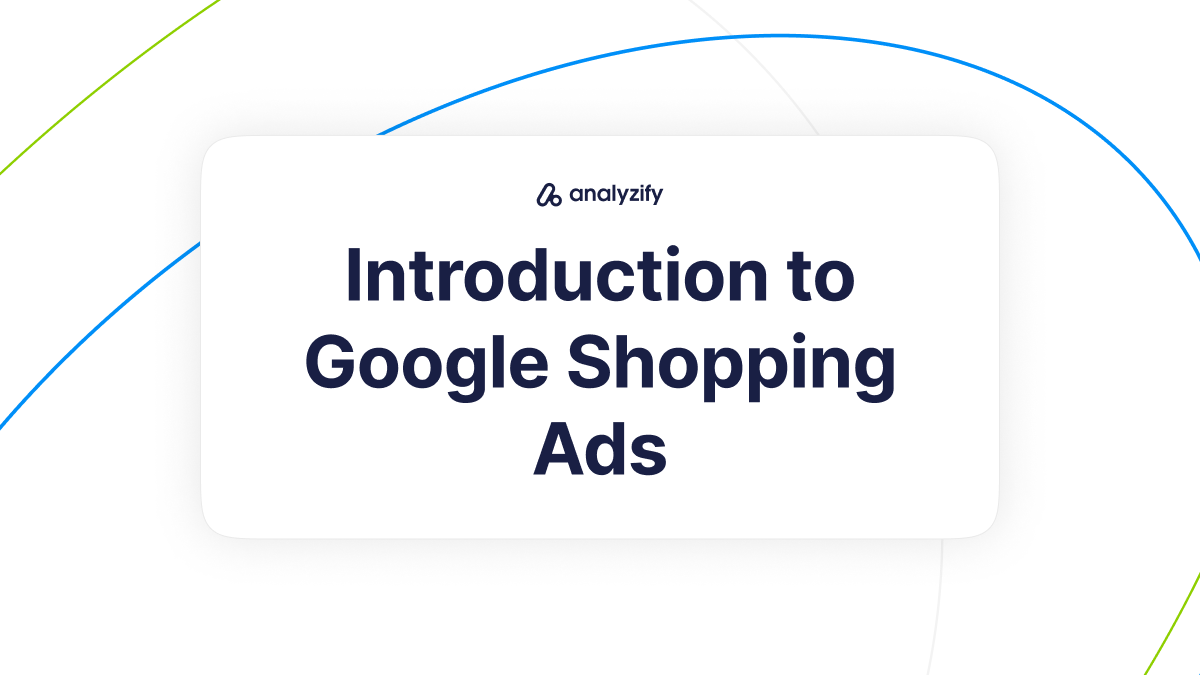
What Makes Google Shopping Ads Different?
Unlike traditional text ads that only display words, Google Shopping Ads showcase your products visually right on the search results page. Here’s what makes them special:
- Product images that catch shoppers’ attention
- Real-time price information
- Your store name
- Product title and details
- Additional information like shipping or promotions
🔍 Important Note: Google Shopping Ads don’t use keywords to determine when to show your products. Instead, they use your product data to match your items with relevant searches automatically.
How Google Shopping Ads Work
Your product information flows through two main platforms:
- Google Merchant Center: Stores your product details
- Google Ads: Manages your advertising campaigns
When someone searches on Google, the system:
- Reviews your product data
- Matches it with relevant searches
- Displays your items to potential customers who are looking for products like yours
Where Your Shopping Ads Appear
Your products can show up in multiple places across Google’s network:
Primary Locations:
- Google Search results (next to regular search listings)
- The dedicated Shopping tab
- Google Images
- Google Search partner websites
⭐ Premium Visibility with Performance Max: If you choose Performance Max campaigns, your ads gain additional exposure on:
- YouTube
- Gmail
- Display Network
- Google Maps (for local inventory)
- Demand Gen
Key Benefit: Multiple ads for your products can appear for a single search, potentially doubling your visibility to potential customers.
Bonus: For more details, you can read Google’s official document.
Impact on Your Business
Shopping Ads help your business in three crucial ways:
Better Qualified Leads: When customers see your product image and price before clicking, they’re already informed about what you’re selling. This means they’re further along in their buying journey when they reach your site.
Simpler Management: You don’t need to manage keywords. The system uses your product data to determine when to show your ads, making management more straightforward and retail-focused.
Detailed Reporting: You can track how each product performs without creating complex tracking systems. Want to know how well your blue sneakers are selling? Simply filter your products view.
🎯 Pro Tip: Performance Max campaigns in Google Ads offer the widest reach across Google’s platforms. They automatically access new inventory and formats as they become available, without requiring you to set up new campaigns.
Getting Started Requirements
Before you begin with Shopping Ads, make sure you have:
Essential Accounts:
- Google Merchant Center account
- Google Ads account
- Both accounts linked together
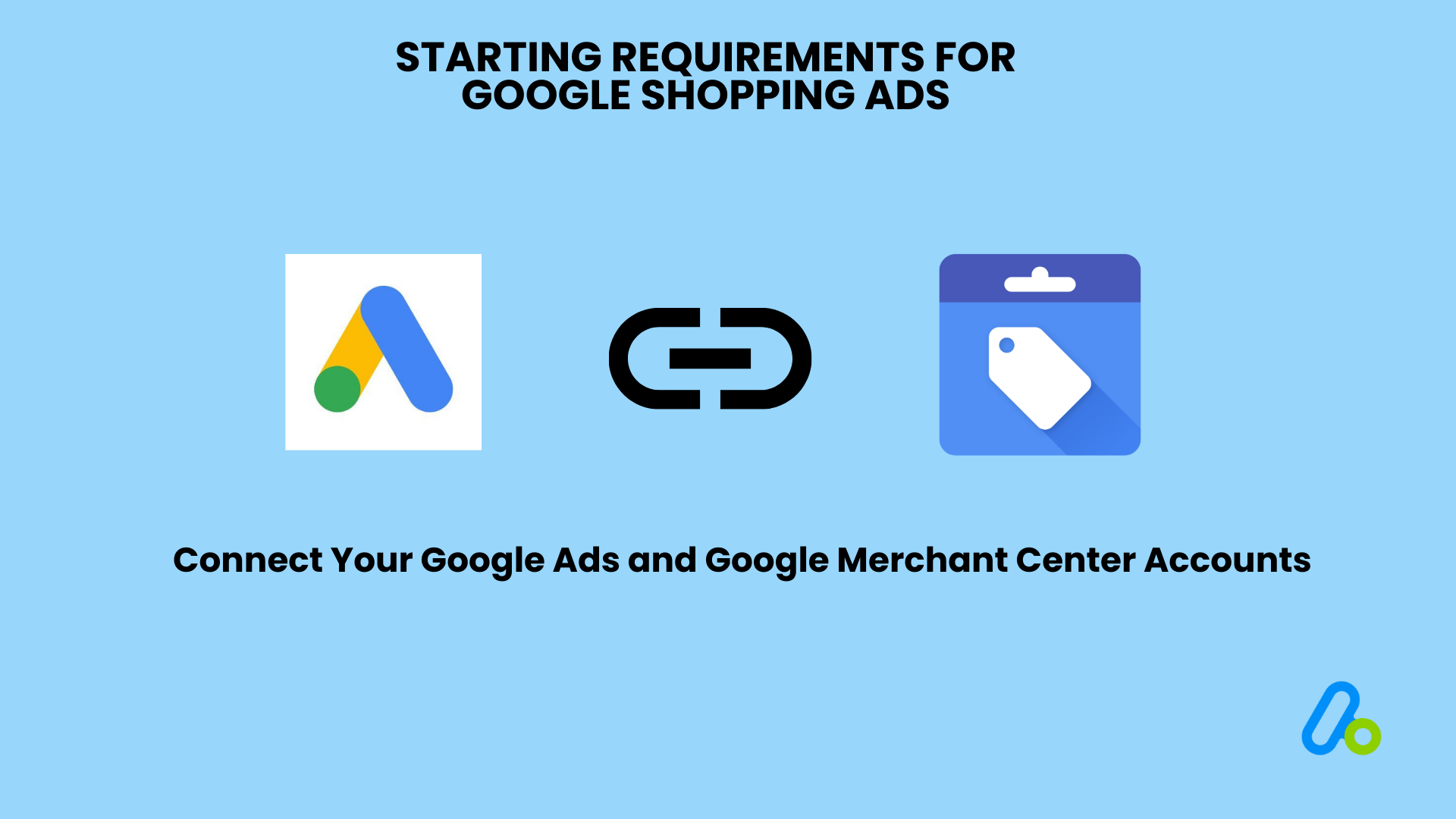
Required Information:
- Up-to-date product data (must be refreshed every 30 days)
- Product information that meets Google’s data quality standards
- Website that complies with Shopping ads policies
⚠️ Important: Your content must comply with specific Shopping ads policies, which differ from standard Google Ads policies. Make sure to review these requirements before starting your campaigns.
Setting Up Your Google Shopping Ads Account
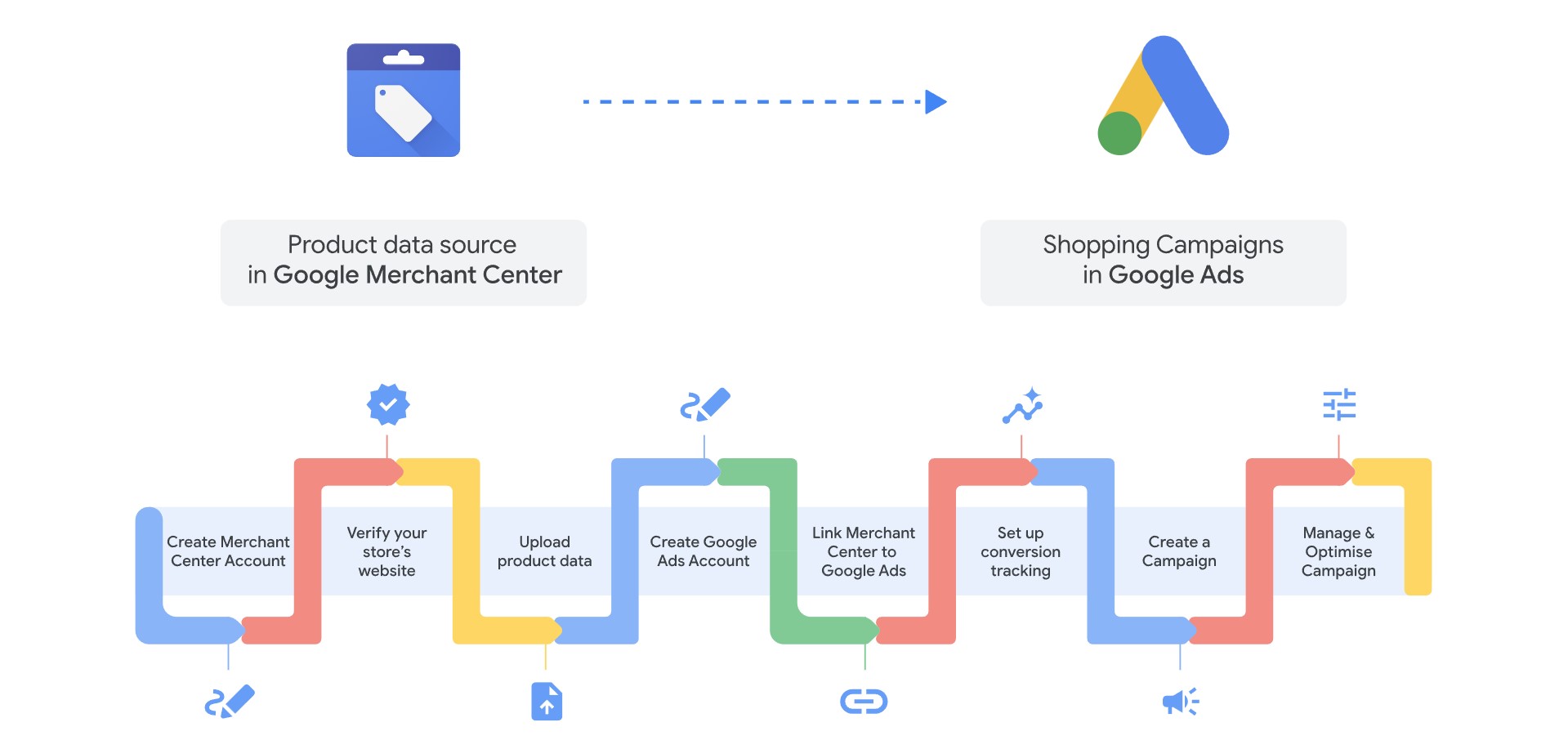
Before you can start showing your products in Google Shopping Ads, you need to set up and configure two main accounts. Let’s go through this process step by step.
Google Merchant Center Setup
The first crucial step in your Google Shopping Ads journey is setting up your Merchant Center account. This will be the home for all your product information.
1) Creating and Verifying Your Account
- Sign up for Google Merchant Center
- Add your business information
- Verify your website ownership
🔑 Website Verification Tip: The easiest verification method is logging into your domain registrar and giving Google access. This ensures a smooth verification process.
2) Adding Your Product Data
You have three main options for uploading your product information:
Automatic Upload • Direct connection from your online store • Automatically syncs product updates
Manual File Upload • Upload a file containing all product details • Includes prices, titles, images, and other specifications
Google & YouTube App for Shopify • Simplified setup for Shopify store owners • Helps create your first Shopping ads quickly
⚠️ Important: Your product data must be updated at least every 30 days to keep your ads running.
3) Configuring Essential Settings
Tax Settings: You can either:
- Enter your rates manually
- Select states where you charge tax and let Google calculate rates
Shipping Rules: Choose from these options:
- Flat rate shipping
- Carrier-calculated rates
- Rate table or rules-based shipping
- Free shipping
Google Ads Account Setup
Now that your Merchant Center is ready, it’s time to set up the platform where you’ll manage your advertising campaigns and budget.
Account Creation and Configuration
Enter billing information
Link your account to Google Merchant Center
🔍Pro Tip: Keep your Google Ads email address handy - you’ll need it along with your 10-digit Google Ads ID for account linking.
Setting Up Conversion Tracking
With your accounts created and linked, the next critical step is ensuring you can track the results of your advertising efforts accurately.
Final Account Checks
Before launching your first campaign, verify:
Your website meets Shopping ads requirements
Product data follows Google’s specifications
All policies are being followed
Conversion tracking is working properly
⚠️ Important Note: New campaigns take 1-2 days for policy review. During this time, your ads won’t run.
Creating Your Google Shopping Ads Product Feed
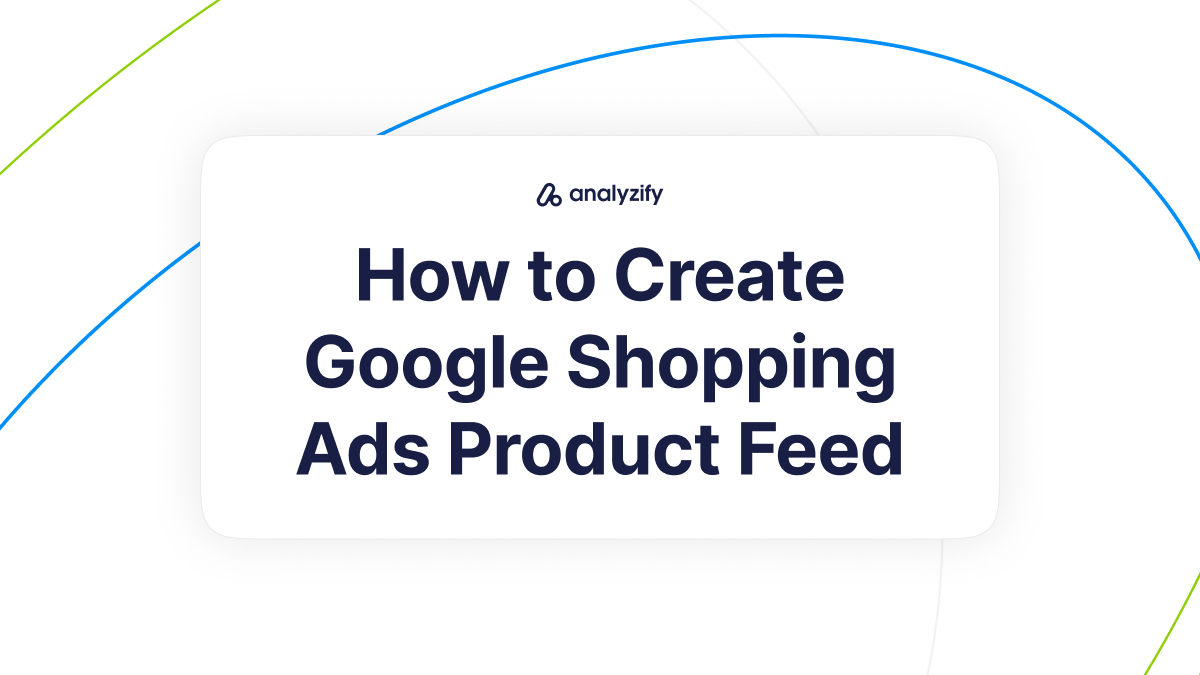
Your product feed is the foundation of your Shopping Ads success. It tells Google everything about your products and determines when and where your ads appear.
Methods to Build Your Shopping Ads Product Feed
Before diving into the details, let’s look at your options for creating and managing your product feed.
1) Manual Feed Using Google Sheets
Best for businesses with a small number of products. You’ll directly input your product information into a spreadsheet format.
2) Shopify Integration
If you’re using Shopify, the Google & YouTube app offers a streamlined way to create and manage your product feed.
Essential Product Feed Elements for Google Shopping Ads
Your feed quality directly impacts your ad performance. Let’s examine each crucial element that makes up a successful product feed.
1) Product Titles (150 Characters)
Think of your title as the most powerful element in your feed. Here’s how to create effective titles:
🎯 Example of Good vs. Basic Title:
- Basic: “Breville Espresso Machine”
- Better: “Breville Barista Express BES870XL Espresso Machine with Dual Burners—Stainless Steel”
⚠️ Important: Words at the beginning of your title carry more weight with Google. Structure your titles carefully.
2) Product Descriptions
While primarily visible on the Shopping tab, your descriptions help Google understand your products better. Create descriptions that:
- Engage potential customers
- Include key product details
- Are clear and comprehensive
3) Product Categories
There are two types of categories you need to set up:
Google Product Category: Use Google’s taxonomy and be as specific as possible. For example:
- Basic: “Apparel & Accessories”
- Better: “Apparel & Accessories > Clothing > Dresses”
Product Type: This is your free-form field for keywords. While not visible to shoppers, it helps Google understand your products better.
4) Images
Your product images can make or break your ad performance. Here’s what works best:
- Clean, white backgrounds (Google’s preference)
- Clear product visibility
- Proper thumbnail cropping
- High-quality resolution
5) Pricing Information
Critical Elements:
- Current price
- Sale price (if applicable)
- Sale price effective dates
🔍 Sale Price Note: To show price drops, your original price must have been charged for at least 30 non-consecutive days in the past 200 days, and the sale price must be 5-90% less than the base price.
6) Brand and Identifier Information
Every product needs these crucial identifiers:
Required Elements:
- Brand name
- GTIN (like UPC or ISBN)
- MPN (Manufacturer Part Number)
⚠️ Important: GTINs are now mandatory for any product that has been assigned one by the manufacturer.
7) Special Category Requirements
Different product types need additional information:
Apparel Products Need:
- Gender (male, female, unisex)
- Age group (newborn, infant, toddler, kids, adult)
- Size information
- Color
- Size type (regular, petite, plus, etc.)
- Size system (US, UK, EU, etc.)
Custom Labels Strategy
Custom labels help you organize and manage your campaigns better. Consider using labels for:
- Seasonal items
- Best sellers
- Price ranges
- Performance levels
- Special promotions
🎯 Pro Tip: You can create up to five custom labels (label 0-4) for each product, allowing for detailed campaign organization.
Product Feed Maintenance
Your feed isn’t a “set it and forget it” element. Regular maintenance is crucial:
- Update data at least every 30 days
- Monitor for disapproved products
- Keep pricing and availability accurate
- Check for feed errors regularly
In the next section, we’ll explore how to use this product feed in different types of Shopping Ad campaigns to maximize your results.
Types of Google Shopping Ad Campaigns
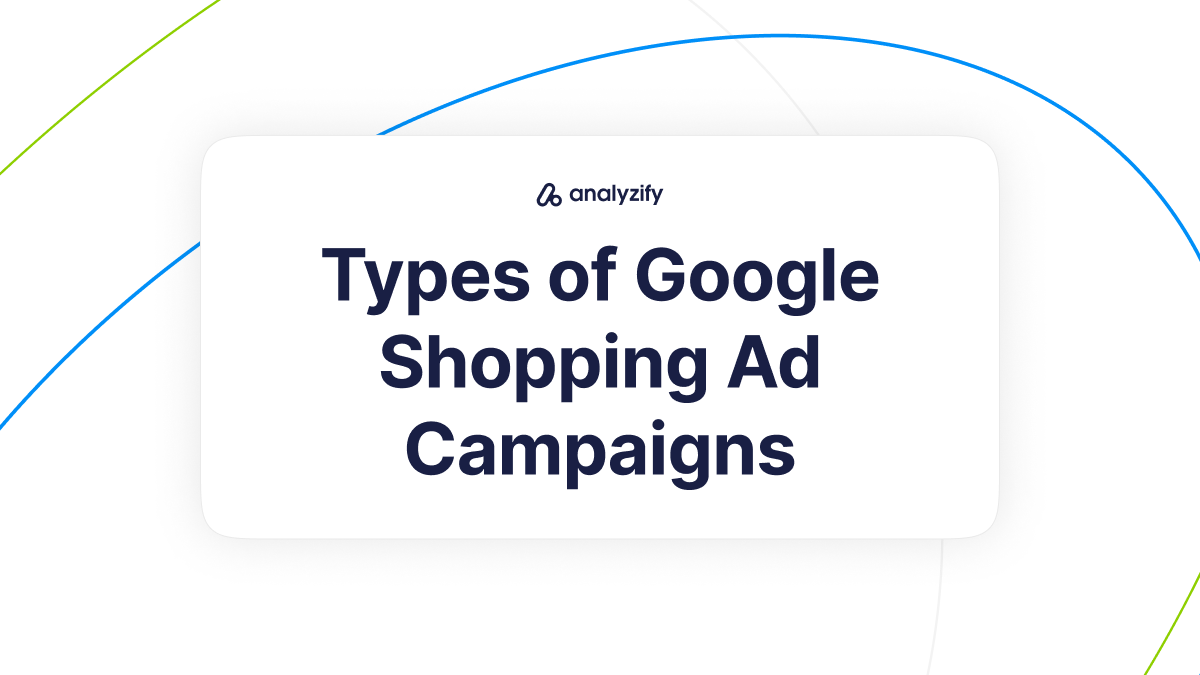
Understanding the differences between Google Shopping Ad campaign types is crucial for your success. Each type offers unique features and capabilities that can significantly impact your results.
Performance Max Campaigns
Performance Max represents Google’s most advanced campaign type, designed to help you find more customers and meet specific business goals.
How Performance Max Works
Unlike traditional campaigns, Performance Max:
- Uses your campaign inputs and product feed
- Optimizes performance automatically
- Adapts to find your best customers
Ad Placements
Your ads will appear across Google’s entire ecosystem:
- The Shopping tab
- Google Search (next to search results)
- Google Search text ads
- Google Images
- Display network
- YouTube
- Gmail
- Demand Gen
- Maps (through Local Inventory Ads)
🔍 Key Advantage: When new ad formats or placements become available, your Performance Max campaign automatically gains access without any additional setup.
⚠️ Important: Performance Max campaigns take priority over Standard Shopping campaigns for the same products in your account.
Standard Shopping Campaigns
Standard Shopping campaigns offer more direct control over your advertising and work well for specific marketing goals.
Where Ads Appear
- The Shopping tab
- Google Search (next to search results)
- Google Images
- Google Search Partner websites
- Maps (through Local Inventory Ads)
Standard Shopping Campaign Setup
Initial Setup: • Choose “Sales” or another campaign objective • Select Shopping as your campaign type • Choose your Merchant Center account
Feed Selection: Two ways to select products: • By feed label: Choose specific product groups • By Country of Sale: Target specific markets
Campaign Settings: Essential configurations: • Campaign name • Inventory filter • Local products option • Campaign URL options • Bidding strategy • Daily budget • Campaign priority
🎯 Pro Tip: Your campaign priority setting becomes crucial when you’re advertising the same product in multiple campaigns.
Bidding Control
Standard Shopping offers more bidding options:
1) Automated strategies
- Target ROAS
- Maximize Clicks
2) Manual CPC bidding
Local Inventory Ads
Local Inventory Ads help you showcase products available in your physical stores to nearby shoppers.
Setup Differences
In Performance Max:
- Automatically enabled when you attach a local products inventory feed
- Seamlessly integrates with your existing campaign
In Standard Shopping:
- Must explicitly enable “ads for products sold in local stores”
- Requires additional configuration in campaign settings
⚠️ Important Note: Before running Local Inventory Ads, ensure your local product data is properly set up in Merchant Center.
Understanding Campaign Priority
When running multiple campaigns, remember:
- Performance Max takes precedence over Standard Shopping
- For optimal performance, set your Performance Max budget equal to your other campaign budgets combined
- Campaign priority helps manage budget allocation effectively
🔍 Key Difference: While Performance Max creates ads automatically based on your assets, Standard Shopping campaigns use only your Merchant Center feed data.
Choosing the Right Campaign Type
Consider these factors when selecting your campaign type:
Choose Performance Max if you want:
- Maximum reach across Google’s platforms
- Automated optimization
- Access to new ad formats automatically
Choose Standard Shopping if you need:
- More direct control over bidding
- Specific audience targeting
- Simpler campaign management
Google Shopping Ads Bidding System
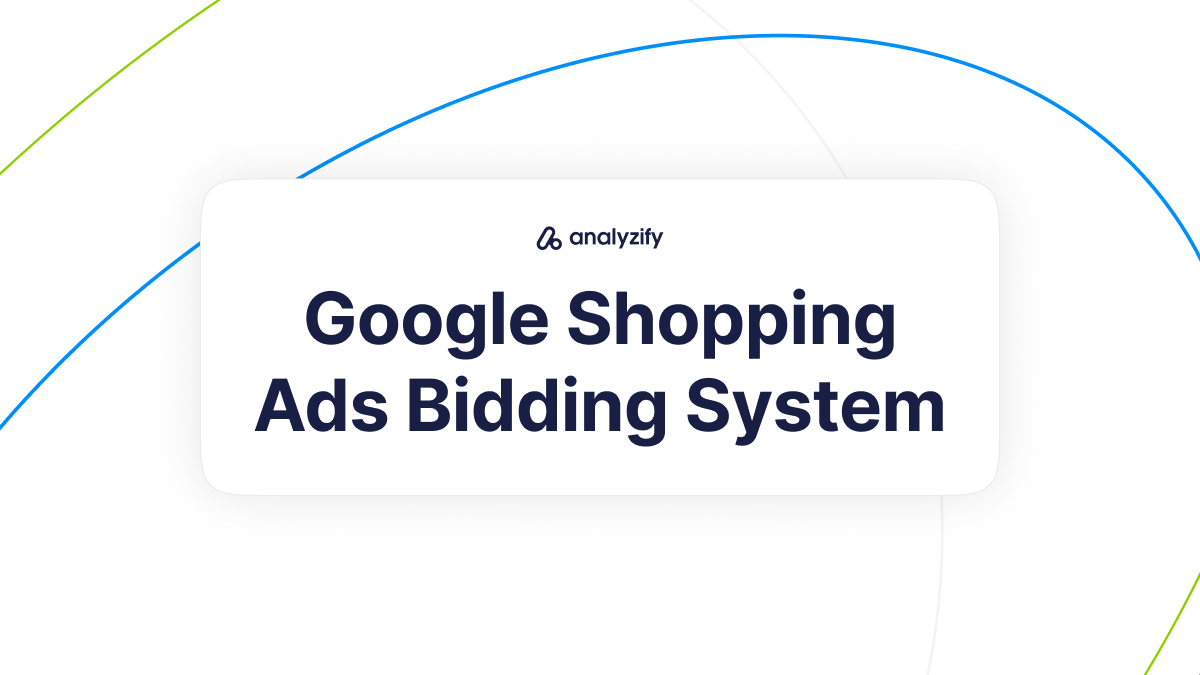
Understanding how bidding works in Google Shopping Ads is essential for managing your advertising budget effectively. Let’s explore the different bidding strategies and how to use them.
How Google Shopping Ads Bidding Works
Unlike text ads, Shopping Ads don’t use keywords for bidding. Instead, Google uses:
- Your product data to match searches
- Your bid strategy to determine ad placement
- Your campaign settings to optimize performance
Product-Based Bidding
The flexibility of Shopping Ads allows you to set bids at the product group level within each ad group. This gives you control over:
- How much you spend on specific products
- Which products get priority
- How aggressively you bid on different categories
🔍 Important Note: Your product feed quality directly impacts how Google matches your ads to searches, regardless of your bid amount.
Bidding Strategies Available
Google Shopping Ads offers different bidding strategies based on your campaign type. Let’s examine what’s available for each type and how to use them effectively.
1) For Performance Max Campaigns
Performance Max campaigns use automation to optimize your results. Here are your strategy options:
Automated Strategies Only:
Maximize Conversion Value • Focus on getting the highest possible conversion value • Option to add ROAS target
Maximize Conversions • Aims to get the most conversions possible • Option to set target CPA
2) For Standard Shopping Campaigns
Standard Shopping campaigns offer more flexibility in how you manage your bids. Here are your available options:
Automated Options:
- Target ROAS: Set specific return on ad spend goals • Google adjusts bids automatically
- Maximize Clicks: Gets the most clicks within your budget • Maintains control over costs
Manual Option:
1) Manual CPC
- Set bids yourself
- Maintain direct control
- Adjust based on performance
⚠️ Important: With Performance Max campaigns, you’ll only pay for actual campaign performance (clicks or CPM).
Smart Bidding Features
Now that we understand the available strategies, let’s look at how Smart Bidding uses advanced machine learning to optimize your bids. Here’s what makes it powerful:
Auction-Time Bidding
Smart Bidding evaluates and adjusts in real-time, considering:
- Device type
- Physical location
- Time of day
- User behavior
- And many other signals
🎯 Pro Tip: Give Smart Bidding enough data to learn. Avoid making major changes during the learning period.
Bid Adjustment Options
Beyond your basic bidding strategy, you can fine-tune your approach with specific adjustments. These adjustments help you:
You can modify bids based on:
- Device type
- Location
- Time of day
- Audience characteristics
This flexibility allows you to:
- Focus budget on best-performing segments
- Reduce spending on lower-performing areas
- Optimize for specific business goals
Setting Up Your Bidding Strategy
Let’s walk through the process of choosing and implementing the right bidding strategy for your business.
Step 1: Choose Your Primary Goal
First, determine what matters most for your business:
- Maximize sales volume
- Target specific ROAS
- Control cost per acquisition
Step 2: Select Appropriate Strategy
Based on your campaign type and goals, select from:
- Performance Max: Choose automated options
- Standard Shopping: Select from all available strategies
Step 3: Monitor and Adjust
After implementation:
- Watch performance metrics
- Allow learning period (about 2 weeks)
- Make gradual adjustments
⚠️ Important: Frequent changes can disrupt the learning process and impact performance.
Bidding Success Tips
To maximize your success with Shopping Ads bidding, keep these key points in mind:
- Start Conservative: Begin with modest bids • Increase gradually based on performance
- Use Campaign Priority: When running multiple campaigns: • Set clear priorities • Adjust budgets accordingly
- Monitor Performance: Track key metrics: • Click-through rates • Conversion values • Return on ad spend
🎯 Success Tip: Your total Performance Max budget should equal the sum of your other campaign budgets to maintain overall spend when campaigns overlap.
In the next section, we’ll explore how to enhance your Shopping Ads with reviews, promotions, and remarketing strategies.
Enhancing Your Google Shopping Ads

After setting up your basic Shopping Ads campaign, you can significantly improve its performance with additional features. Let’s explore the most effective enhancements available for your ads.
Product Reviews Integration
Product reviews provide crucial information that helps customers make purchase decisions. Let’s see how to add them to your Shopping Ads.
Getting Google’s Approval
Before you can show product ratings, you need to:
Complete the product ratings interest form
Wait for Google’s response (typically 10-15 days)
Follow their instructions for implementation
Review Requirements
For product ratings to appear on your ads:
- Products must have at least 3 reviews
- Reviews must come from approved sources
- Ratings show as a 5-star system
- Total review count is displayed
Review Sources Options
You can collect reviews through:
Google Customer Reviews: Free service from Google • Collects feedback post-purchase • One-click survey on checkout page
🔍 Important Note: Reviews apply to both seller ratings and product ratings eligibility.
Creating Shopping Ads Promotions
Promotions can significantly increase your ad’s click-through rates. Here’s how to implement them effectively.
Types of Promotions
You can add various promotional offers:
- Special discounts
- Free shipping
- Limited-time offers
- Product bundles
Setting Up Promotions
Two methods to create promotions:
Through Marketing Tab: Best for: Simple sitewide sales • Straightforward promotions • Quick implementation
Using Promotional Feed: Better for: Different offers per product • Complex promotional structures • Multiple concurrent offers
⚠️ Important: Your promotion must follow specific requirements:
- Base price must be charged for at least 30 non-consecutive days in the past 200 days
- Sale price must be 5-90% less than the base price
How Promotions Appear
Your promotions show as:
- Clickable “Special offer” annotations
- Additional promotion details on mobile
- Price drop indicators when applicable
Remarketing Strategies
Remarketing helps you reconnect with people who’ve shown interest in your products. Let’s explore how to implement effective remarketing campaigns.
Setting Up Audience Lists
Remarketing Lists for Search Ads (RLSAs): Target users based on: • Previous site visits • Cart abandonment • Product page views • Past purchases
Customer Match Lists: Use your customer data to: • Upload email lists • Target past customers • Create similar audiences
YouTube Lists: If you have video content: • Target channel subscribers • Reach video viewers • Engage with your video audience
🎯 Pro Tip: Use similar audiences to find new customers who share characteristics with your best customers.
Dynamic Remarketing Setup
Dynamic remarketing shows previous visitors the specific products they viewed. To set this up:
- Prerequisites: Active product feed • Conversion tracking • Remarketing tag on your site
- Implementation Steps: Create a dynamic remarketing campaign • Link your product feed • Set up audience sources
Bonus: Discover our complete guide to dynamic remarketing in Google Ads!
Audience Customization
Create specific audiences based on:
- Time since last visit
- Pages visited
- Actions taken
- Purchase history
⚠️ Important: Keep your customer lists updated for better targeting accuracy.
Monitoring Your Google Shopping Ad Performance
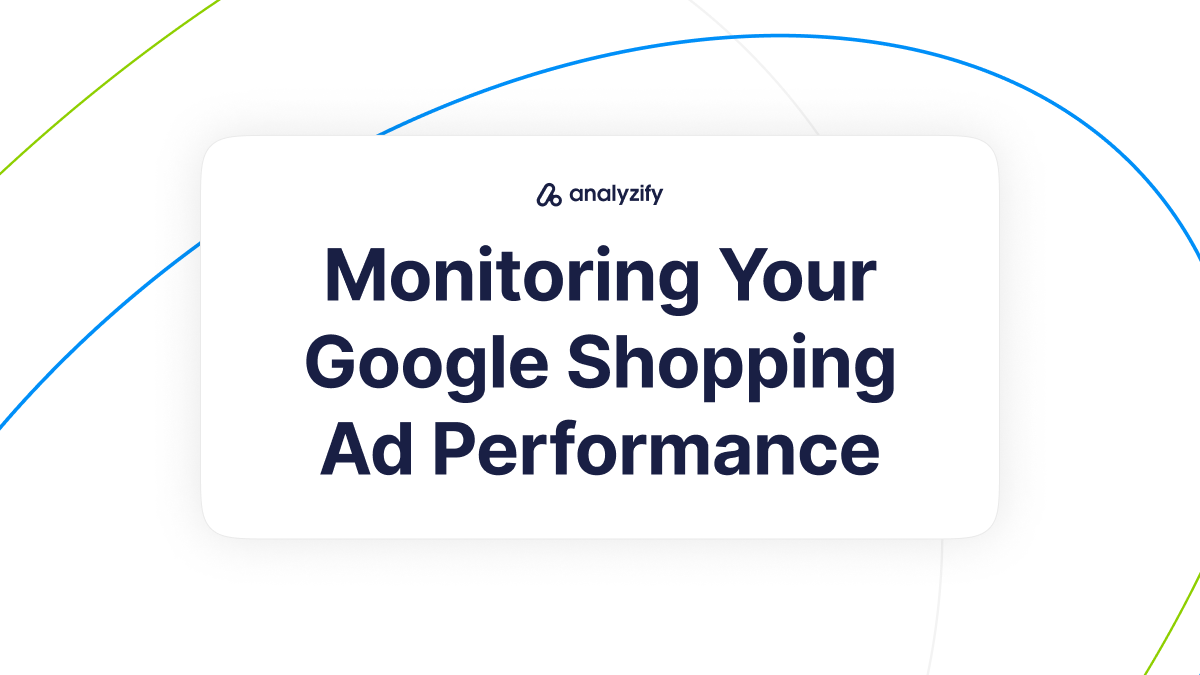
Understanding how your Shopping Ads perform is crucial for success. Let’s explore how to track, analyze, and improve your campaigns effectively.
Learning Period for New Campaigns
Before diving into performance analysis, it’s important to understand the initial campaign phase.
What to Expect
- First 2 weeks are considered the learning period
- Performance may fluctuate during this time
- Your bid strategy is gathering data
⚠️ Important Note: Avoid making major changes during the learning period. Let Google’s system collect enough data about your products and audience.
Understanding Common Performance Issues
Let’s examine why campaigns might not perform as expected and how to address common issues effectively.
1) Campaign Not Running or Low Traffic
When your Performance Max campaigns aren’t performing, start by examining your Google Merchant Center account status and verifying your product feed health. Check for any disapproved products and ensure you have sufficient budget available.
For Standard Shopping campaigns, the process is slightly different. Begin by examining your campaign priority settings and reviewing your bid levels. Key areas to check include:
- Campaign targeting settings
- Network configurations
🔍 Pro Tip: If all campaigns with Merchant Center feeds aren’t running, start your investigation with the Merchant Center account.
2) Performance Fluctuations
Your campaign performance may naturally vary over time. This often happens due to seasonal changes and shifting competition levels. Additionally, any adjustments you make to budgets or bid strategies can impact performance.
Understanding these fluctuations helps you respond appropriately without overreacting to normal variations.
Tracking Essential Metrics
Different businesses have different goals, and your tracking should reflect your specific objectives.
With Cart Data Tracking
Cart data tracking provides deep insights into your campaign performance. You can monitor revenue per product and track profit margins across your catalog. Most importantly, it allows you to measure your return on ad spend (ROAS) and analyze product-level performance in detail.
Without Cart Data
When cart data isn’t available, focus on your conversion rates and overall campaign ROAS. Two essential metrics to monitor closely:
- Cost per conversion
- Click-through rates
Using Performance Reports
Google Ads provides reporting tools to analyze your campaigns effectively. At the product level, you can analyze individual item performance and identify your top and bottom performers. Pay special attention to price competitiveness, as this often impacts performance significantly.
Competitive Analysis
Use Google’s benchmarking data to understand your market position and identify growth opportunities. This data helps you:
- Track your impression share
- Make informed bid adjustments using the Bid Simulator
🎯 Success Tip: Make incremental changes rather than dramatic ones. This helps maintain stable performance and makes it easier to track the impact of your changes.
Google Shopping Ads Troubleshooting
When issues arise, follow these steps for resolution.
Low Traffic Issues
Start by checking your product approval status and reviewing your bidding strategy. If these look good, examine your targeting settings and verify your budget availability. Often, low traffic issues stem from one of these core areas.
Performance Drops
When performance suddenly decreases, first look for any recent changes you’ve made to the campaign. Check current competition levels and review seasonal patterns that might affect your results. Don’t forget to examine your feed quality, as this can significantly impact performance.
Conversion Issues
Begin by verifying your tracking setup and ensuring your website functions properly. Review your price competitiveness, as this often affects conversion rates. A thorough analysis of your landing page experience can also reveal opportunities for improvement.
⚠️ Important: Document all changes you make. This helps track which optimizations work best for your campaigns.
Free Google Shopping Listings
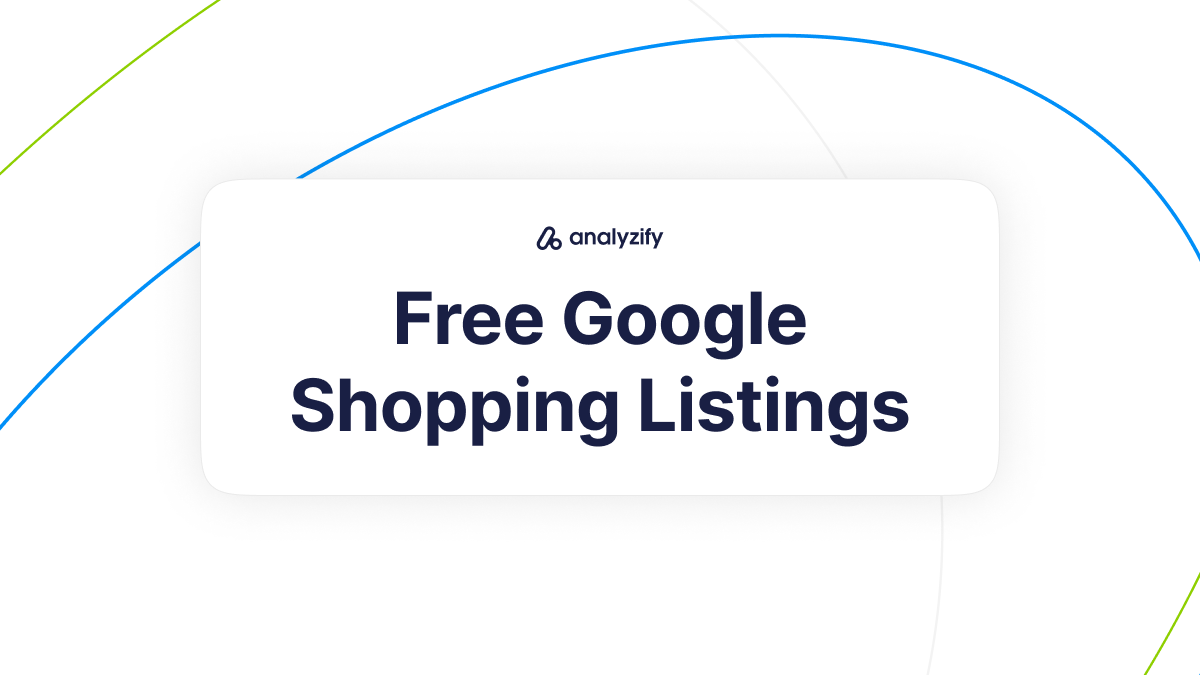
While paid Shopping Ads dominate the main search results, free product listings offer additional visibility opportunities. Let’s understand how to maximize this free channel alongside your paid campaigns.
Understanding Free Product Listings vs. Paid Ads
It’s important to understand where your products appear in each format. Paid Shopping Ads secure the most prominent positions, including all shopping results on the main search page.
They appear at the top of search results, in premium positions on the Shopping tab, and across all Google networks depending on your campaign type.
Free listings, on the other hand, appear on the Shopping tab, Google Images, Google Lens, and other Google surfaces. While they won’t drive as much traffic as paid placements, they provide additional exposure for your products without extra cost.
🔍 Important Note: The most prominent positions remain paid placements, but free listings can complement your paid strategy effectively.
Setting Up Free Listings
Getting your products listed for free follows a similar process to paid ads setup. You’ll need a Google Merchant Center account, a product feed that meets Google’s standards, and a website that complies with Google’s policies.
Merchant Center Configuration
The setup process begins with your Merchant Center account. First, create or access your account and complete the website verification process. Then, set up your product feed with accurate information about your items.
This feed will power both your free listings and any paid campaigns you run.
Product Data Management
Successful free listings depend on high-quality product data. Keep your feed accurate with regular updates to pricing and inventory. Remove out-of-stock items promptly and ensure all product information remains current.
Your product data must meet the same quality standards as paid listings for optimal performance.
⚠️ Important: Maintaining accurate and up-to-date product information is crucial for both free and paid listings.
Maximizing Free Listing Performance
While free listings won’t transform your business dramatically, they can provide significant value when properly optimized. Focus on creating detailed product titles, comprehensive descriptions, and using high-quality images.
Keep your pricing competitive and regularly update your product information to maintain listing quality.
Performance Monitoring
Tracking the performance of your free listings helps optimize your overall shopping strategy. Monitor impressions, clicks, and click-through rates to understand how your listings perform. Pay attention to product approval status and traffic quality to identify areas for improvement.
Use this performance data to inform your broader marketing strategy. Identify which products perform well in free listings to guide your paid advertising decisions. This information can help you allocate your advertising budget more effectively.
Best Practices for Free Listings
Success with free listings requires attention to detail in several key areas. Ensure your product data follows all specifications and remains current. Write clear, informative descriptions and use accurate product categories.
Regular maintenance is essential – monitor product status, fix any disapproved items promptly, and keep seasonal offerings updated.
Combining Free and Paid Strategies
The most effective approach combines free listings with paid advertising. Use free listings to test new products and gauge market demand before investing in paid promotion. This strategy helps you understand which products might perform best in paid campaigns while maintaining visibility across both channels.
Free listings can also help you identify opportunities for expansion. By monitoring performance in free listings, you can spot products that might benefit from additional paid promotion, helping you make more informed decisions about your advertising investments.
🎯 Success Tip: Think of free listings as a complement to your paid advertising strategy rather than a replacement. They work best when used together as part of a comprehensive approach to Google Shopping. In the next section, we’ll explore the Google Shopping Actions program and how to sell directly through Google.
Google Shopping Actions Program
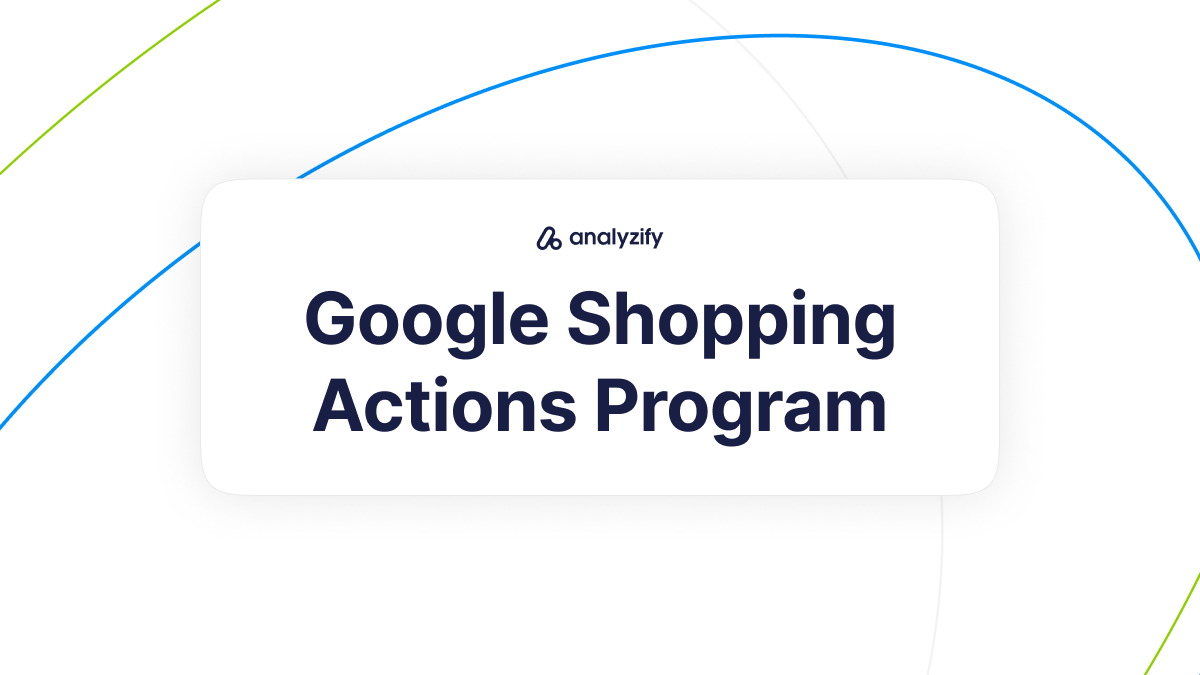
The Google Shopping Actions program, also known as “Buy on Google,” allows customers to purchase your products directly through Google. Let’s explore how this program works and how to implement it effectively.
Understanding Buy on Google
When you participate in Shopping Actions, your products gain visibility across Google’s ecosystem, including standard Search results, the Shopping tab, Google Images, YouTube, Google Assistant, and the Shopping app. Unlike standard
Shopping Ads, customers complete their purchase without leaving Google’s platform, creating a streamlined buying experience.
How the Purchase Process Works
The Shopping Actions process follows a straightforward flow. When a customer clicks your listing, Google handles the entire transaction, including price calculation, sales tax, and shipping charges. The order details are then sent to your
Merchant Center, Google processes the payment, and you handle the product shipment.
Google Shopping Actions Program Requirements
To qualify for Shopping Actions, you must meet specific criteria. The most crucial requirements involve your return policy:
- Accept returns for at least 30 days after purchase
- Process refunds within two business days
- Follow all standard Shopping campaign policies
Beyond these basics, you need to maintain strong operational standards, including accurate inventory management, timely order processing, reliable shipping practices, and responsive customer service.
Setting Up Shopping Actions
Start by configuring your Merchant Center account properly for Shopping Actions. Verify your business information, establish shipping rules, set up tax settings, and create clear return policies.
Your products must meet specific criteria, including:
- Complete and accurate product data
- Clear pricing information
- High-quality images
- Detailed product descriptions
Managing Orders and Inventory
Successful participation requires careful attention to both order processing and inventory management. When receiving orders, promptly review the details in Merchant Center, process the order, update shipping information, and maintain customer communication.
Keep your inventory management precise by regularly updating stock levels and maintaining consistent pricing across channels. Remove out-of-stock items promptly and manage product variations effectively.
Best Practices for Success
Focus on delivering excellent customer service by responding quickly to inquiries and handling returns efficiently. Make your listings stand out with high-quality images and detailed descriptions, while keeping pricing competitive.
🎯 Success Tip: Monitor your metrics regularly and adjust your strategy based on performance data.
Integration with Other Shopping Campaigns
Shopping Actions works best as part of a comprehensive strategy that includes:
- Standard Shopping campaigns
- Performance Max campaigns
- Free product listings
⚠️ Important: Maintain consistent pricing and policies across all your sales channels to ensure a good customer experience.
Frequently Asked Questions About Google Shopping Ads
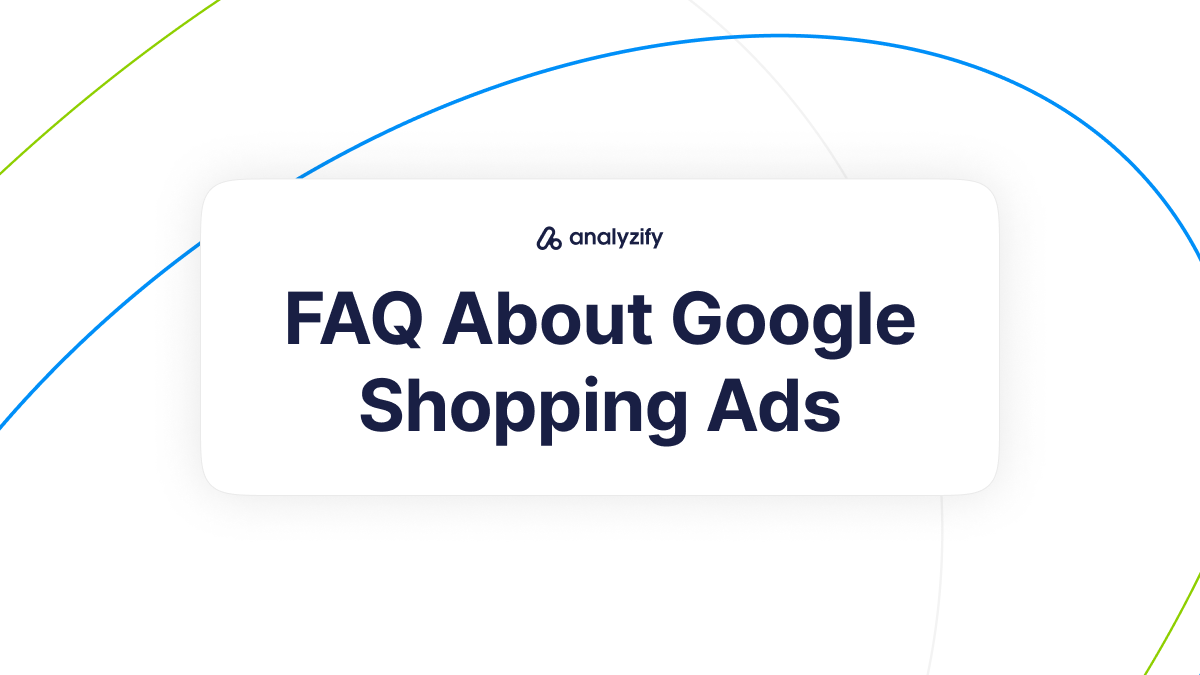
Here are the most common questions retailers ask about Google Shopping Ads.
Are Google Shopping ads free?
No. While Google offers free product listings on the Shopping tab, Shopping Ads are a paid service. You’ll pay when someone clicks your ad, with costs varying based on competition and your bidding strategy.
How to get started with Google Shopping ads?
Start by creating a Google Merchant Center account, uploading your product feed, and linking it to a Google Ads account. You’ll need to verify your website, set up conversion tracking, and configure shipping and tax settings before launching your first campaign.
Why do people use Google Shopping?
Shopping Ads drive significant results, accounting for 76.4% of retail search spending in the US. They show products visually with prices and details upfront, helping attract qualified leads who are ready to make a purchase.
How long do Google Shopping ads take to work?
Expect a learning period of about two weeks. During this time, Google’s systems gather data about your products and audience. Avoid making major changes during this initial period for best results.
Where are Google Shopping ads shown?
Shopping Ads appear across Google’s network, including Google Search results, the Shopping tab, Google Images, YouTube, Gmail, the Display network, and Google Maps (for local inventory ads).
What does a Shopping ad look like?
A Shopping ad includes a product image, title, price, store name, and sometimes additional information like shipping details or product ratings. Unlike text ads, they provide visual product information directly in search results.
How do I get my product listed on Google Shopping?
Upload your product feed to Google Merchant Center, ensuring it meets Google’s data specifications. Keep your feed updated at least every 30 days, maintain accurate pricing, and follow all Shopping ads policies.
Are Google Shopping ads profitable?
They can be highly profitable when managed effectively. Since shoppers see product details before clicking, the traffic tends to be more qualified, often leading to better conversion rates.
When did Google Shopping ads start?
Google Shopping Ads launched as a paid platform in 2012 and has since evolved into one of Google’s most effective advertising formats.
How much does Google Shopping ad cost?
There’s no fixed cost - you’ll pay per click, with prices varying based on your product category, competition, and seasonal factors. You control spending through your daily budget and bidding strategy.
What is the difference between text ads and Shopping ads?
Shopping Ads show product images, prices, and details directly in search results, while text ads display only written content. Shopping Ads also use product feed data for targeting rather than keywords.
Are Google Shopping ads better than Instagram ads?
They serve different purposes. Shopping Ads often capture users with higher purchase intent who are actively searching for products. However, the best approach typically combines multiple platforms in your marketing strategy.
What triggers Google Shopping ads?
Your product data, not keywords, determines when your ads appear. Google matches your product information with relevant searches automatically based on your product feed details.
What is a good budget for Google Shopping ads?
While there’s no universal “right” budget, start with enough to gather meaningful data - typically enough for at least 100 clicks in your market. Adjust based on performance and your business goals.
How much does it cost to be on Google Shopping?
While you can list products for free on the Shopping tab, paid Shopping Ads work on a cost-per-click basis. Your total cost depends on your bidding strategy, competition, and how much you’re willing to spend daily.

































